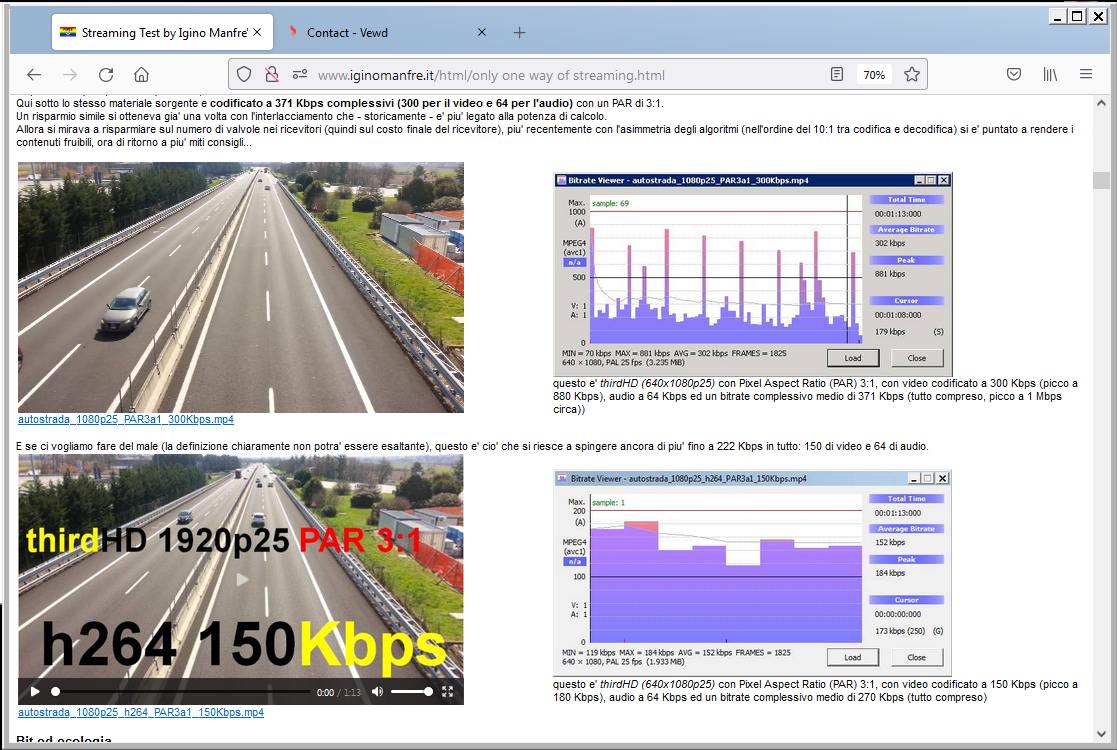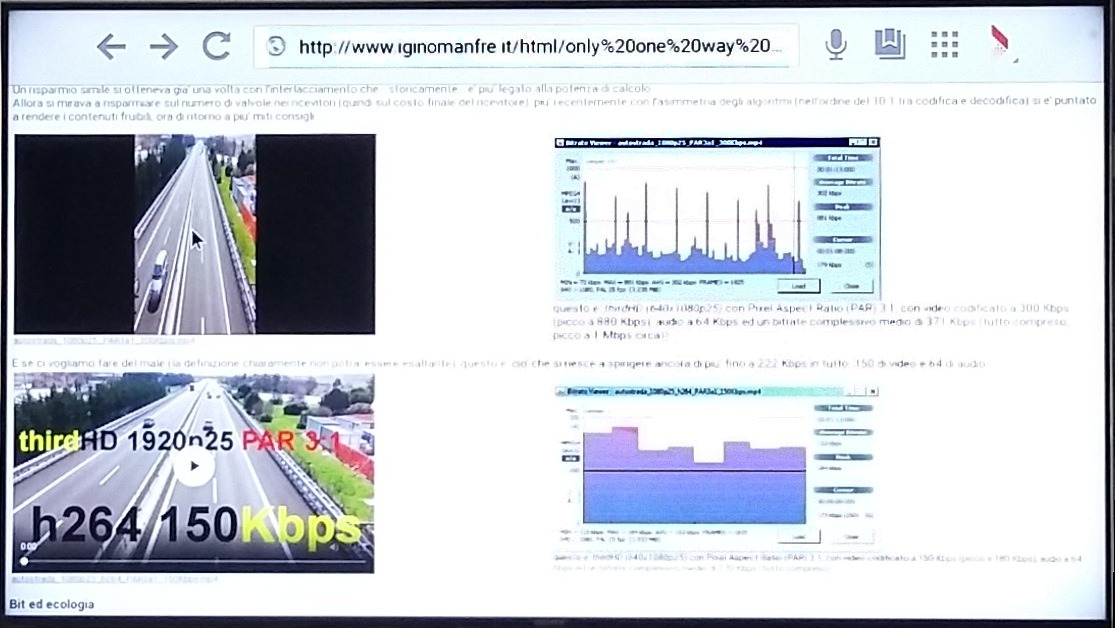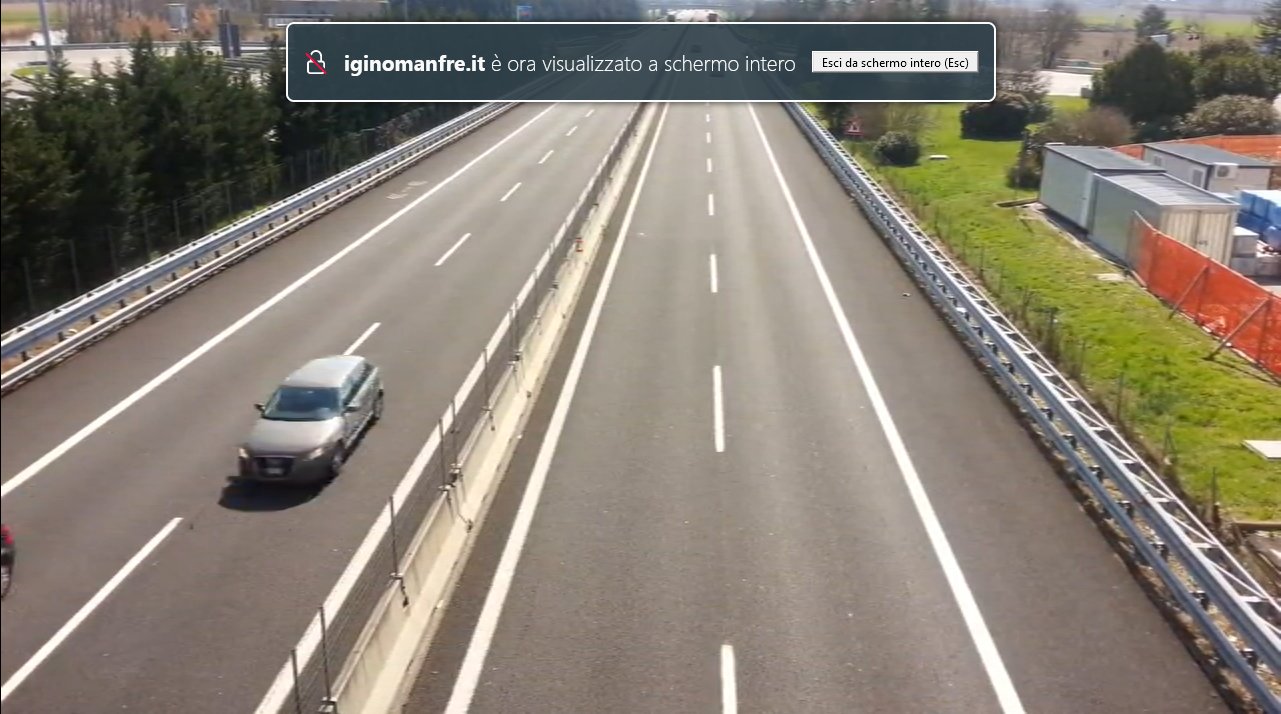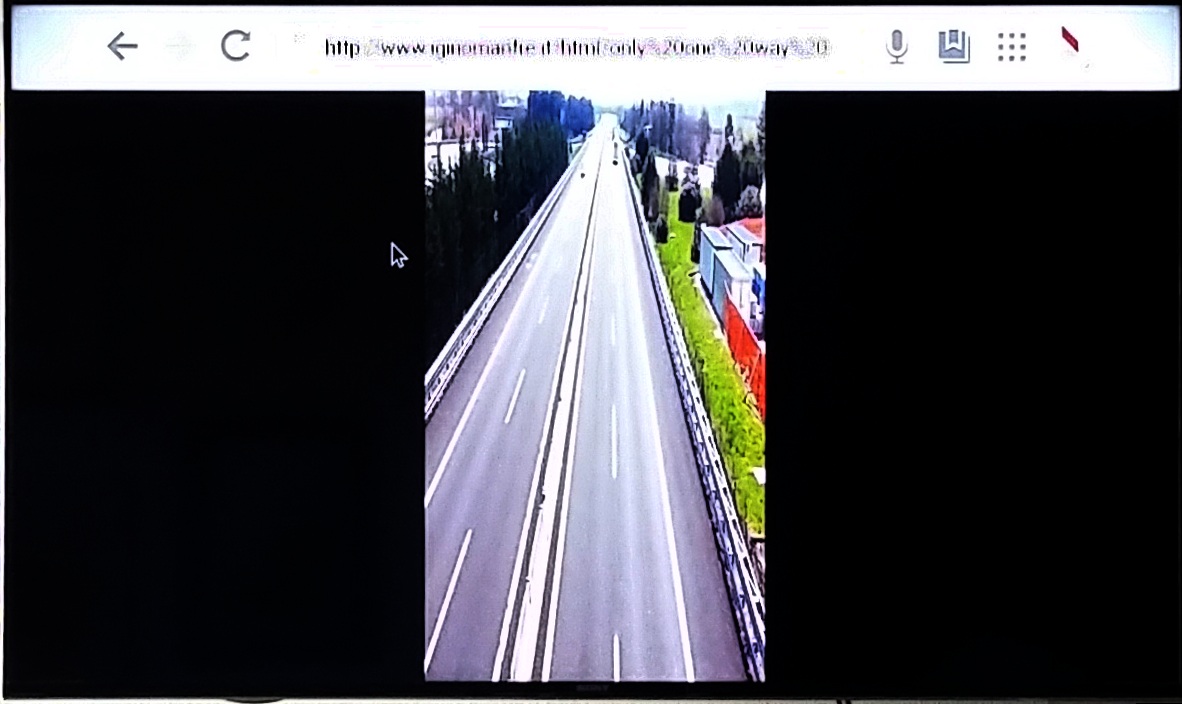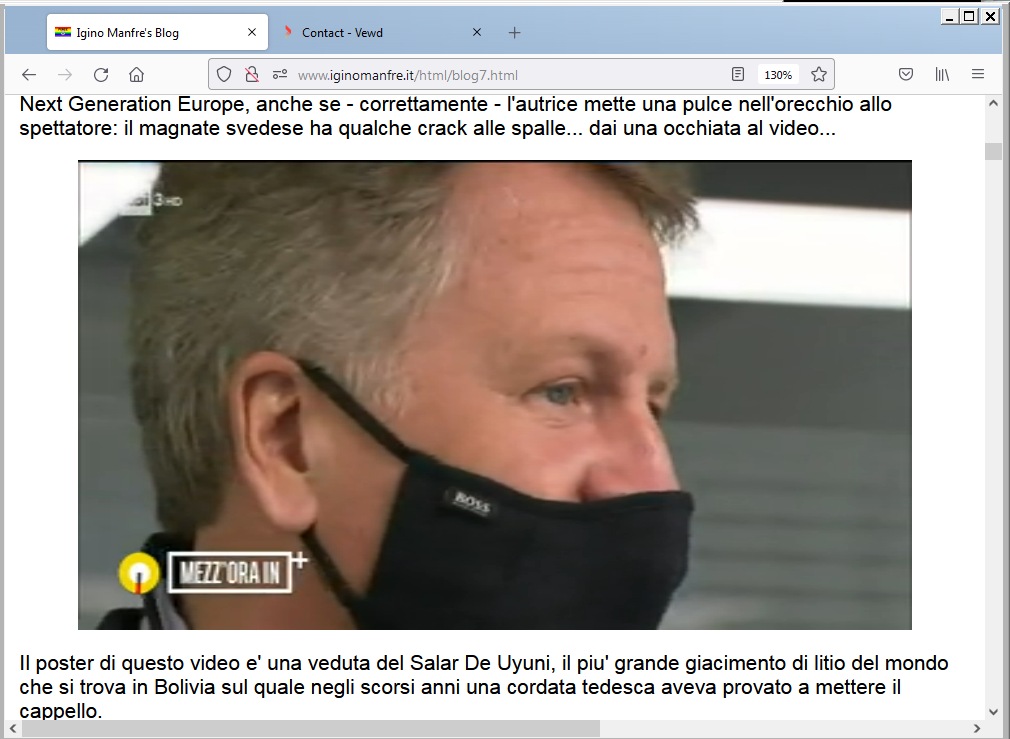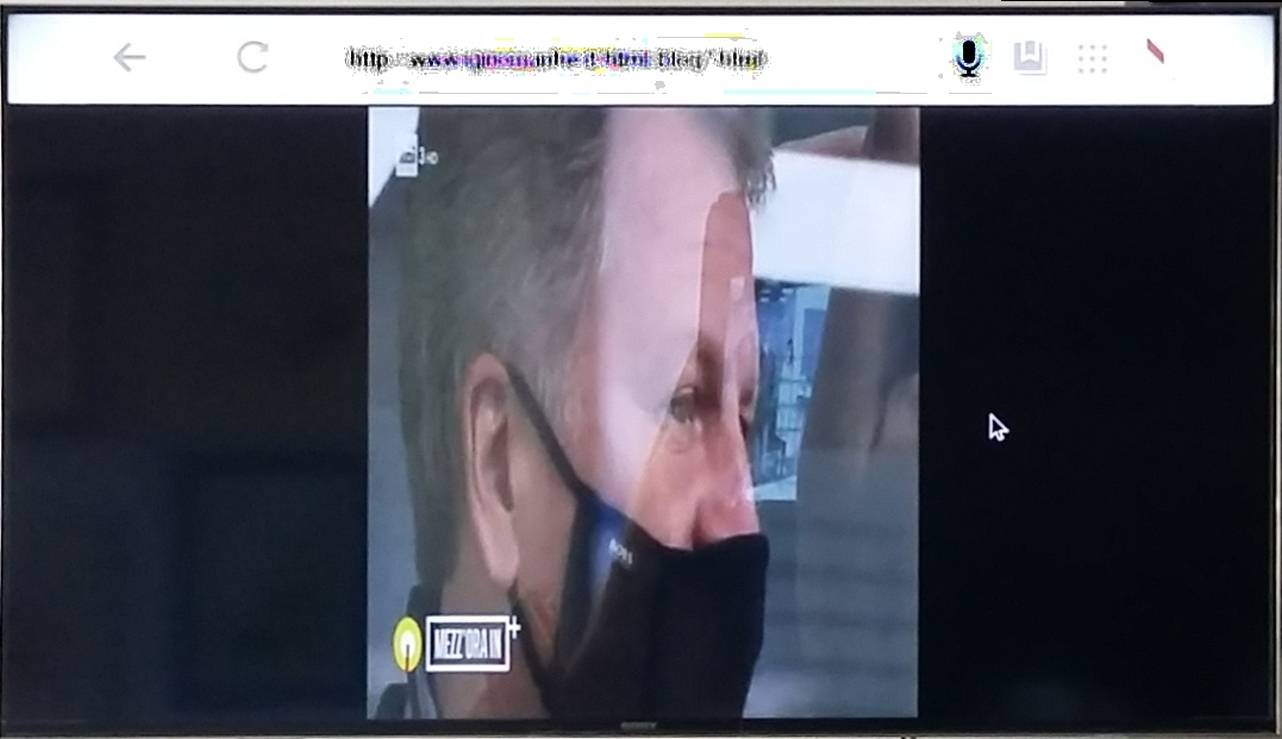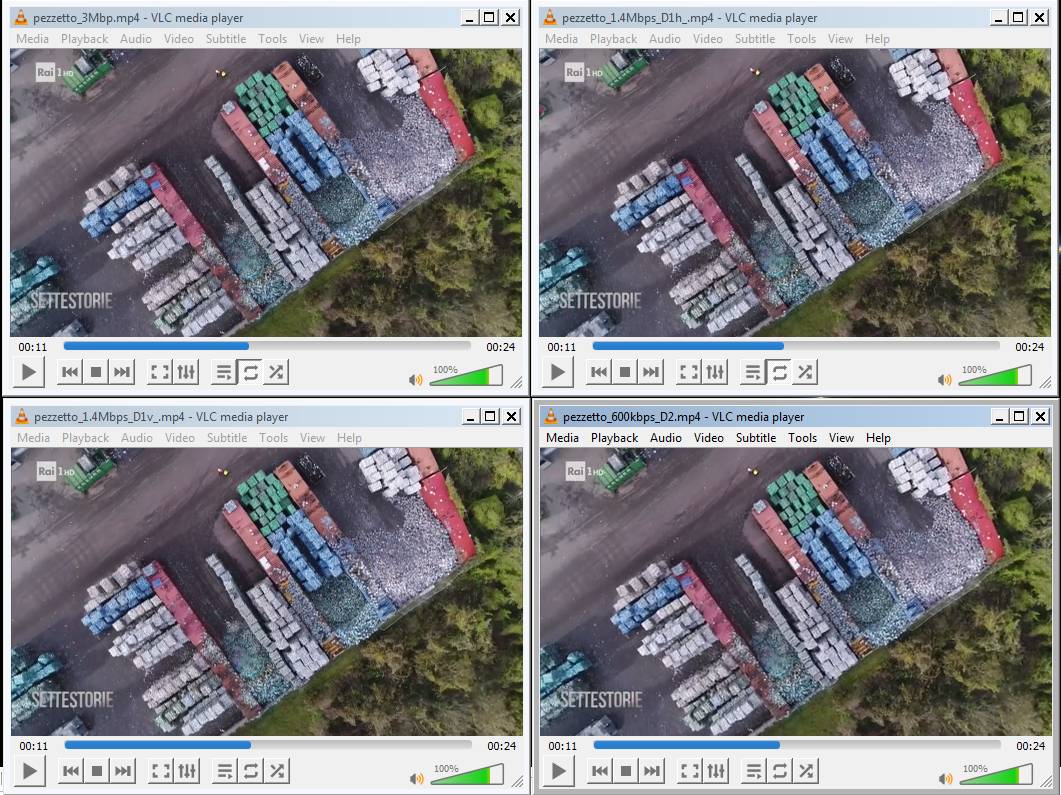
...ma se richiami i link degli stessi file video con il browser vedi qualcosa di molto diverso.
diverso: il solo dimezzamento del frame dapprima solo in senso orizzontale o verticale poi in entrambe le direzione.
Il risultato e' stato quello ricordato da questa immagine: il primo e il quarto vanno bene, gli altri due sicuramente no...
![]()
L'aspect ratio corrotto di questi video e' a dir poco spiacevole, e inizialmente pensavo fosse un problema del player di firefox
(visto che VLC mostrava le cose bene).
Si deve concludere che non ci si deve mai fidare delle tradizioni, nemmeno di quelle considerate piu' solide...
Questo perche' l'attivita' di compressione ha tanti di quei parametri (chi ha provato almeno una volta ad usare
ffmpeg puo' comprendere) che i tool - come avidemux - che presentano ffmpeg in modo piu' umano facilmente
fanno perdere di vista le cose significative e non.
Il player h264 di Firefox, al contrario di VLC, tiene conto sia dell'aspect ratio del multiplexer che del PAR e
quindi se la dimensione orizzontale del video e' dimezzata ma il PAR e' lasciato 1:1 la riproduzione
sara' dimezzata orizzontalmente.
Finche', tra i tanti settaggi di default di avidemux mi sono imbattuto nel PAR.
In precedenza ero andato a cercare sul web se il tag <video> dell'html5 gestisse queste scalature,
scoprendo - ahime' - che non c'e' modo di cambiare l'aspect
ratio o scalare il video e mostrarlo nella dimensione desiderata similmente a come e' possibile con VLCplayer (o eventuali
invocazioni del suo plug-in quando era possibile).
height attribute
https://www.w3schools.com/tags/att_video_height.asp
The height attribute specifies the height of a video player, in pixels.
Tip: Always specify both the height and width attributes for videos. If these attributes are set, the required space for the video is reserved when the page is loaded. However, without these attributes, the browser does not know the size of the video, and cannot reserve the appropriate space to it. The effect will be that the page layout will change during loading (while the video loads).
Note: Do not rescale video with the height and width attributes! Downsizing a large video with these attributes forces a user to download the original video (even if it looks small on the page). The correct way to rescale a video is with a program, before using it on a web page.
width attribute
https://www.w3schools.com/tags/att_video_width.asp
The width attribute specifies the width of a video player, in pixels.
Tip: Always specify both the height and width attributes for videos. If these attributes are set, the required space for the video is reserved when the page is loaded. However, without these attributes, the browser does not know the size of the video, and cannot reserve the appropriate space to it. The effect will be that the page layout will change during loading (while the video loads).
Note: Do not rescale video with the height and width attributes! Downsizing a large video with these attributes forces a user to download the original video (even if it looks small on the page). The correct way to rescale a video is with a program, before using it on a web page.
In realta' lo sbaglio era mio che non modificavo il PAR, fidandomi troppo della bocca buona di VLC player. Ecco le schede di avidemux per il settaggio del PAR:
applicato a pezzetto_1.4Mbps_D1h_5.mp4
applicato a pezzetto_1.4Mbps_D1v.mp4
originale: pezzetto_3Mbp.mp4
dimezzamento orizzontale: pezzetto_1.4Mbps_D1h_5.mp4
dimezzamento verticale: pezzetto_1.4Mbps_D1v.mp4
dimezzamento bidirezionale: pezzetto_600kbps_D2.mp4
